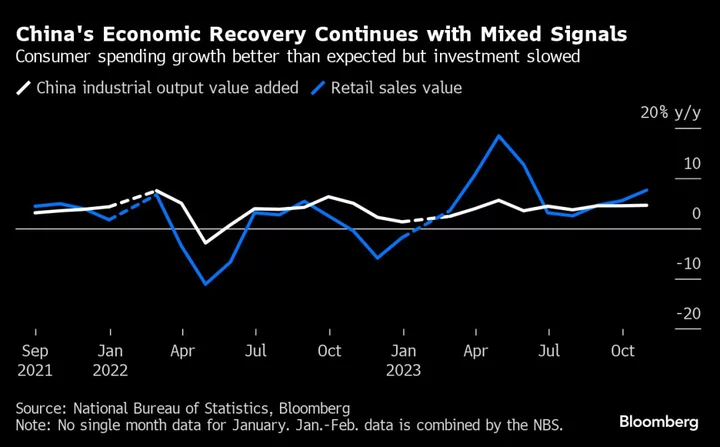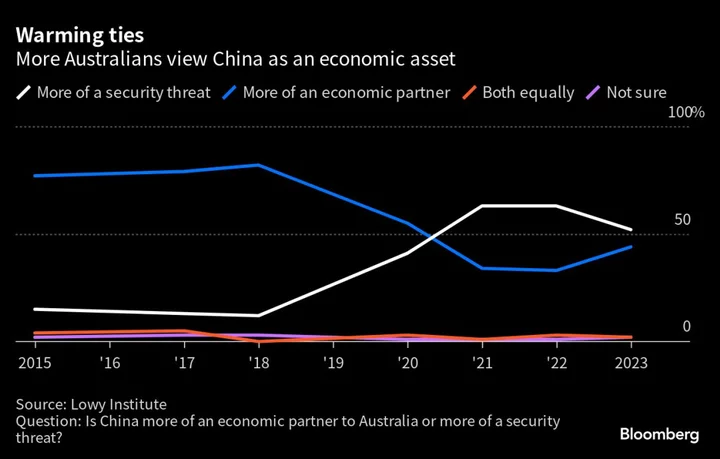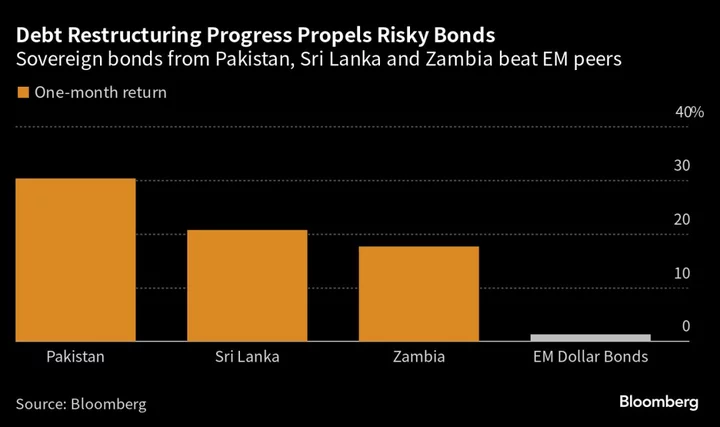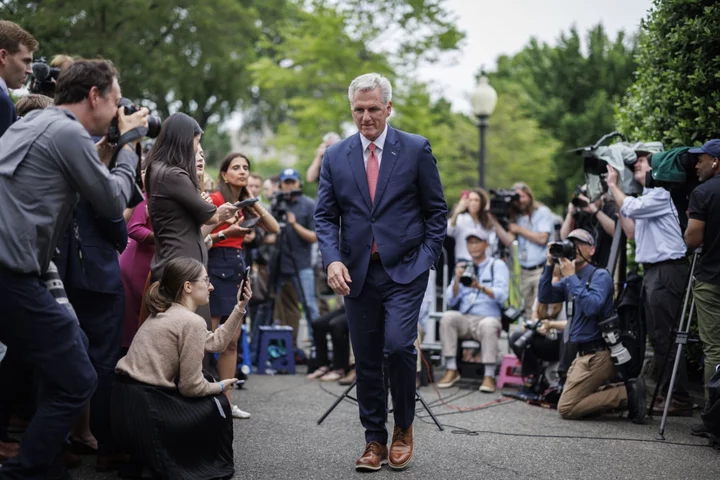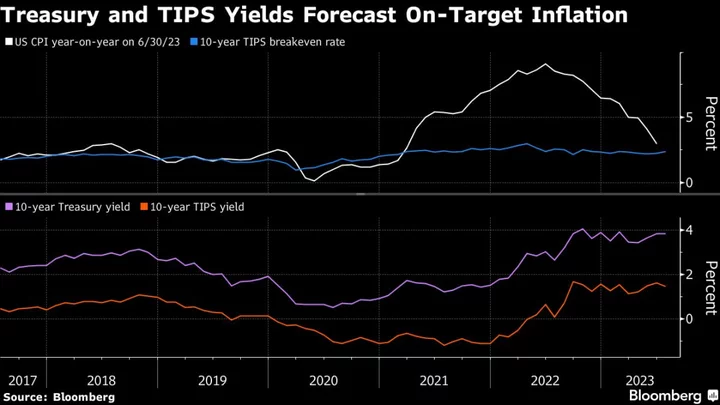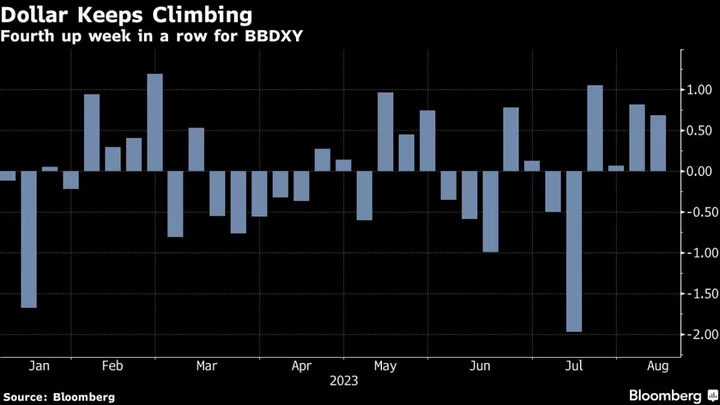China’s economic activity was mixed in October as consumer spending and industrial output picked up, while investment growth slowed on an ongoing property crisis that has dampened the recovery’s outlook.
Retail sales climbed 7.6% from a year earlier, the National Bureau of Statistics said Wednesday, better than estimates — though it compared to a particularly weak month in 2022 when spending contracted amid pandemic restrictions and outbreaks. Industrial production rose 4.6% from a year earlier, higher than the consensus forecast of a 4.5% increase.
Growth in fixed-asset investment slowed to 2.9% in the first 10 months of the year, weaker than the 3.1% forecast by economists. Property investment dropped 9.3% year-to-date, worsening from the period through September. The urban jobless rate was unchanged at 5%.
While the economy outperformed expectations in the July-to-September period, recent indicators have pointed to weakening momentum and demand as the final quarter kicked off. Official and private surveys showed factory activity contracting and growth in services moderating. A drop in exports worsened, consumer prices dipped back into deflation and borrowing by households and companies was muted.
Policymakers are taking steps to add stimulus to help the economy, including via an unconventional mid-year budget revision and the approval of 1 trillion yuan worth of sovereign bonds for infrastructure investment last month. The People’s Bank of China injected the most cash since 2016 through its medium-term lending facility on Wednesday to support funding for growth.
Beijing is also planning to provide at least 1 trillion yuan ($137 billion) of low-cost financing to the nation’s urban village renovation and affordable housing programs to help the property market, Bloomberg News reported.
Economic growth is still widely expected to comfortably meet an official growth target of around 5% for 2023. Year-on-year growth in the October-to-December period will likely be helped by comparisons to 2022, when the country experienced widespread Covid outbreaks and was still unwinding pandemic restrictions.
Markets are turning the focus, though, to the economy’s real momentum and longer-term perspectives amid growing challenges from a persistent property crisis, aging population and low business growth.

